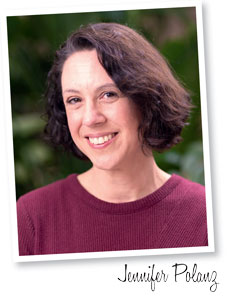8/1/2024
Promoting Pollinators
Jennifer Polanz

There is something immensely satisfying about providing a habitat for Monarch caterpillars and butterflies. The last couple of years we’ve been flush with both, but this year? Nothing. Nada. Zilch.
I knew I was going to write about pollinators, Monarchs and the growing demand we’re seeing throughout the U.S. for plants that attract them all. And I was going to have to admit that this year, I have no Monarchs. I’ve fretted since May. The milkweed even emerged earlier this year than ever. Did I spray something I shouldn’t have? Did I plant something nearby they didn’t like? Did climate patterns change?
I checked my milkweeds before I sat down to write this, and there was a grouping of caterpillars on my Asclepias tuberosa. Here’s where expert knowledge comes into play. I thought they were Monarch caterpillars, but upon messaging the image to industry expert Kylee Baumle, she told me they are actually likely the larvae of milkweed tussock moths. She also let me know that milkweed supports an amazing number of insects—so hey, at least I’m feeding something that will go on to help in pollination!
The point is, I get the demand, because I’m part of it, too. It is such a feel-good part of gardening. There are lots of aspects to love about gardening, but getting to offer up the natural habitat to a species in decline and help them perpetuate? Dang it, that’s good stuff!
For my cover story on prepping for 2025 this month, I talked to a half dozen experts, one of whom was industry consultant Sid Raisch. He talked at last year’s The Garden Center Group Fall Event about the importance of pollinator plants as the entryway for younger gardeners to get involved and continued to emphasize it in this story, too. It ticks a couple of key boxes: providing proper habitats while engaging a new generation that we only sort of are reaching now.
Meanwhile, consumers think they know more about pollinator plants and their ecosystems than they actually do, based on a recent study by university researchers, which means there’s opportunity for more education (and more engagement!).
Pollinators are attracted to both edibles and trees, and we have stories on both in this issue. First, there’s new edibles options as seen at this year’s California Spring Trials and Andrew Bunting’s picks for diminutive (but beautiful) trees for small spaces.
Speaking of education, freelancer Wendy Komancheck recently visited Bloomers Home & Garden Center to find out more about their efforts to educate customers, including sitting in on a podcast and radio show recording session.
And, finally, special thanks go out to consultant extraordinaire Bill McCurry for the final installment of his three-part series on shrink. This time he tackles the hardest aspect—when it’s coming from inside the house.
There are lots of opportunities to continue the dialog on pollinators this fall before getting customers excited for next year. And I’ll start on that soon ... right after I check my baby ’pillars again. GP